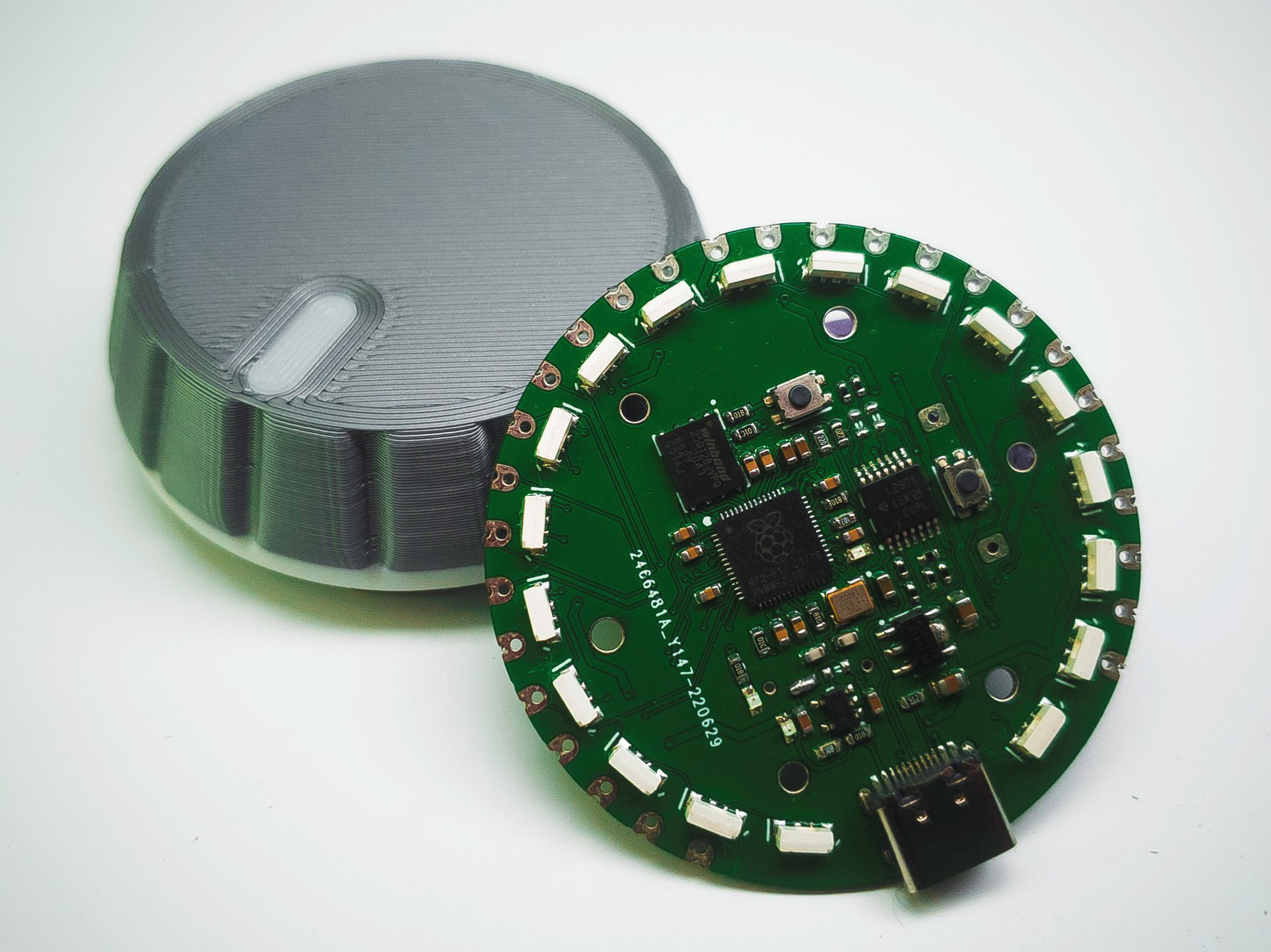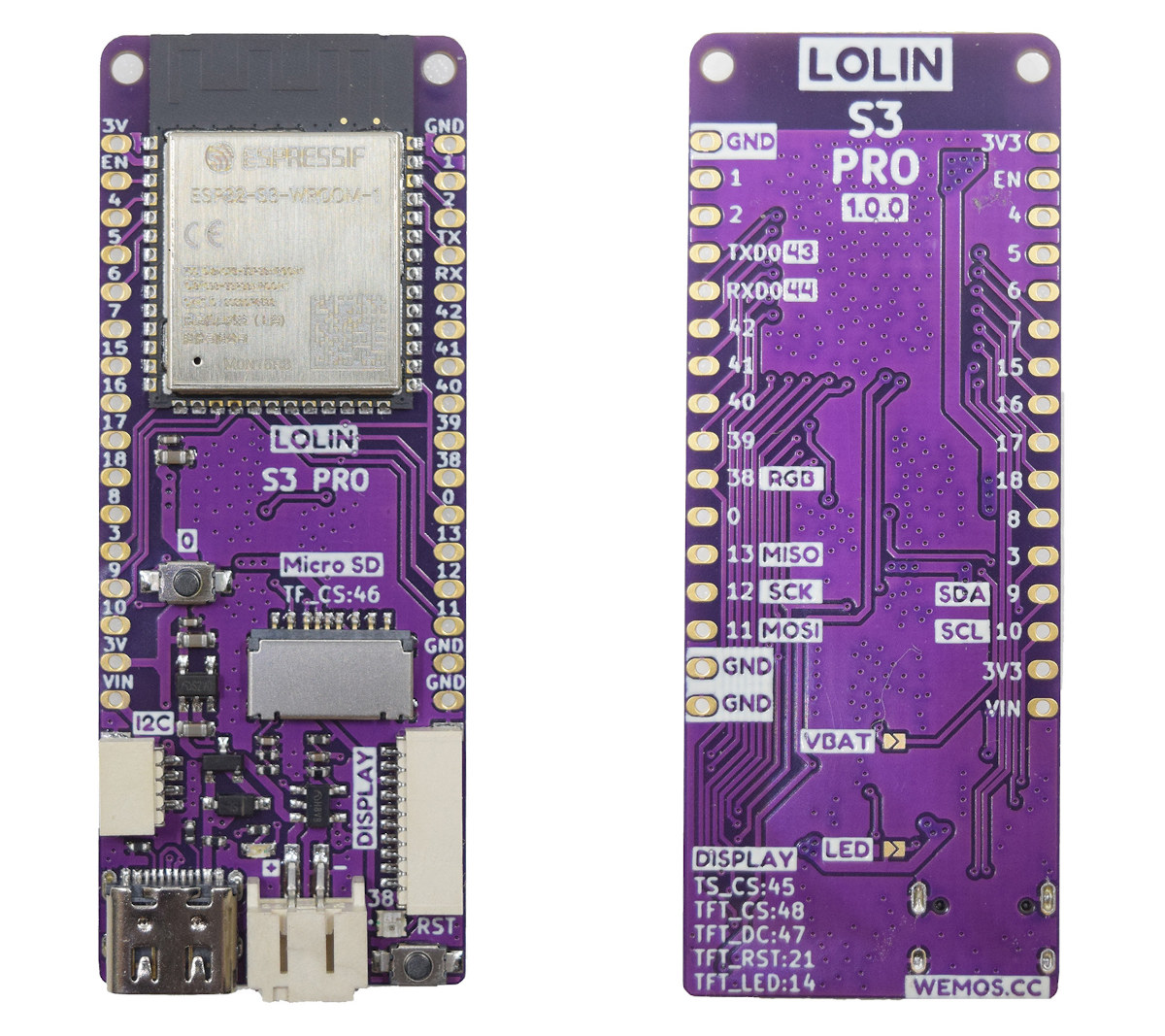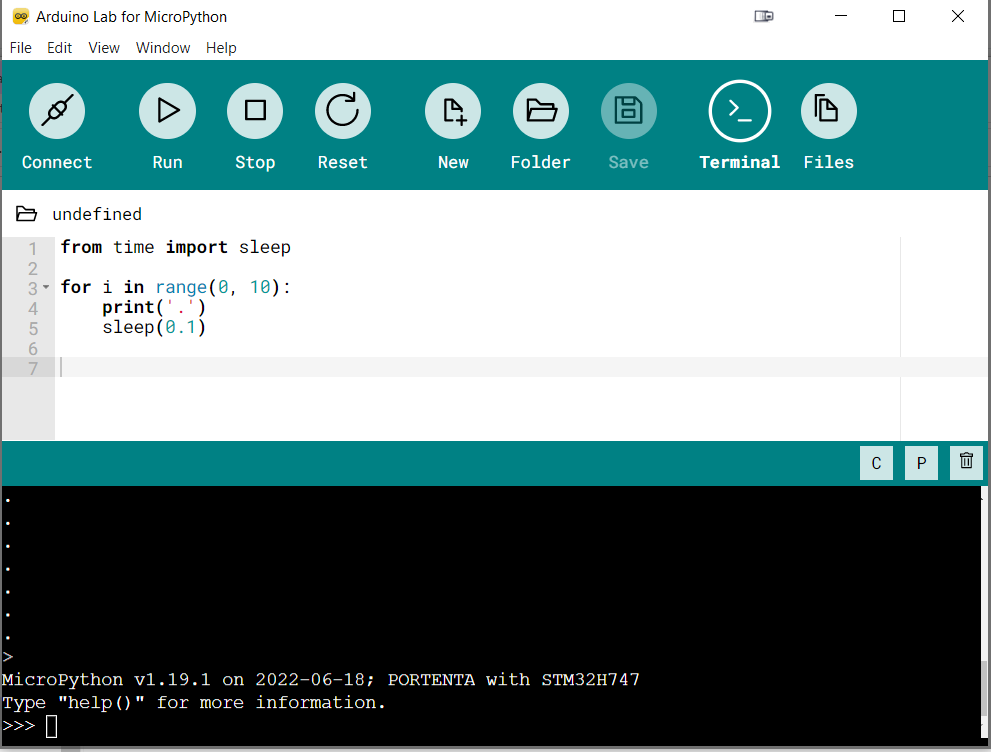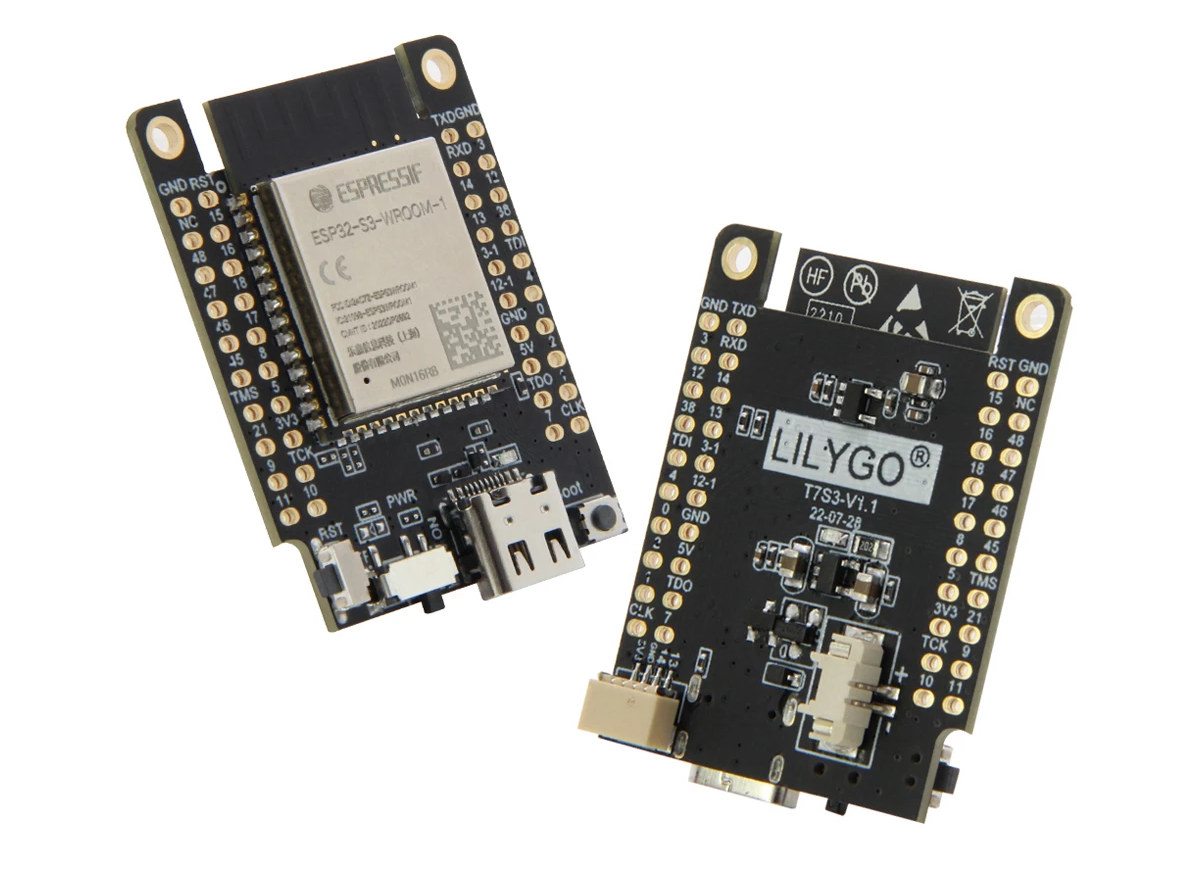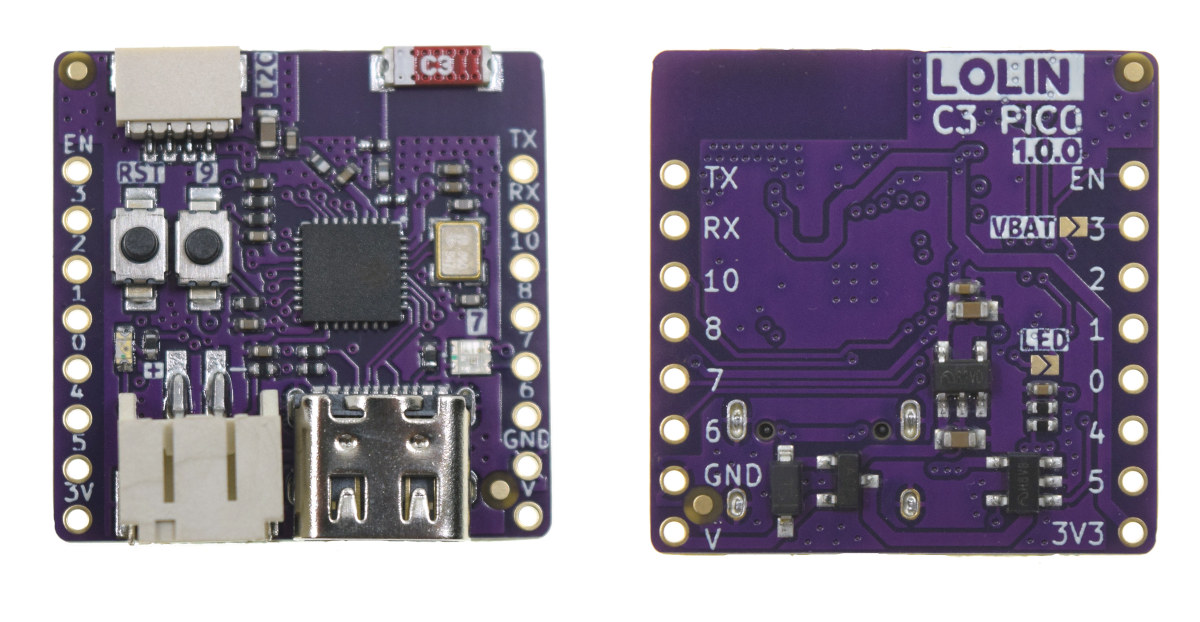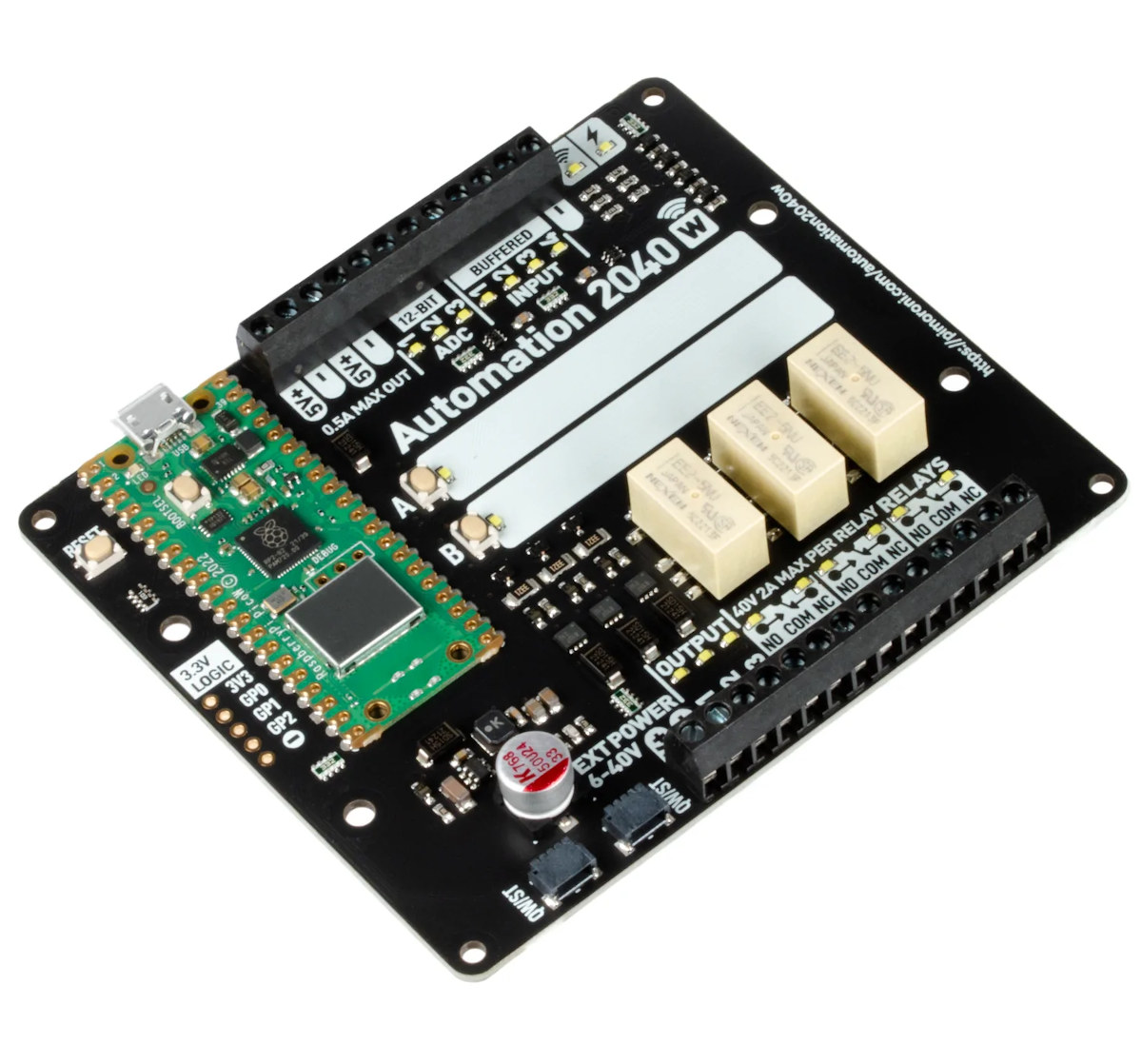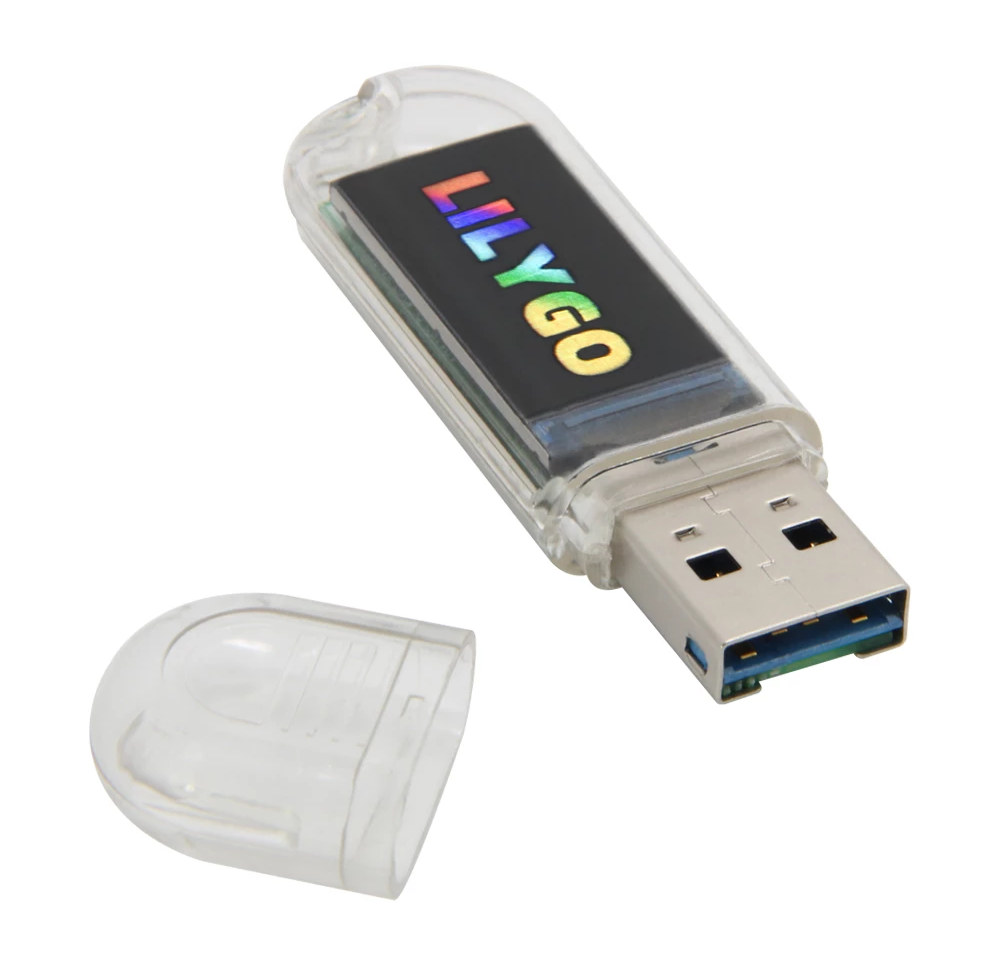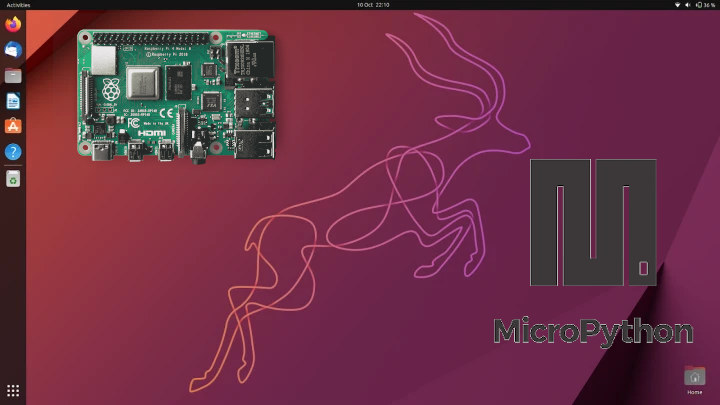PICO DEV M3 is a round-shaped development board based on a Raspberry Pi RP2040 dual-core microcontroller and serves as a magnetic rotary encoder with a few 3D printed parts. Designed by Ahmsville Labs, the board comes with 2MB QSPI flash, various through holes for GPIOs, a USB-C port, and the magnetic rotary encoder supports up to 36,000 steps per revolution and comes with 18 individually addressable LEDs. PICO DEV M3 development board specifications: Microcontroller – Raspberry Pi RP2040 dual-core Arm Cortex-M0+ MCU at 133 MHz with 264kB on-chip SRAM Storage – 2MB QSPI flash USB – 1x USB 1.1 Type-C host/device port Encoder Base resolution of 36 steps, extending up to 36,000 steps per revolution. Ring of 18x individually addressable LEDs Encoder button Ball bearing for a smoother feel compared to traditional rotary encoders Customizable 3D printed encoder Expansion – Through holes placed on the edge of the board for: […]
LOLIN S3 Pro ESP32-S3 board offers display port, MicroSD card slot
LOLIN S3 Pro is a WiFi & Bluetooth LE IoT board built around the ESP32-S3-WROOM-1 modules with various I/Os including a display port, a microSD card slot, and a LOLIN I2C connector. The wireless module ships with 16MB QSPI flash and 8MB PSRAM, and the board also features two 16-pin headers with ADC, DAC, I2C, SPI, UART, etc…, a USB Type-C port, and support for a LiPo batteries with 500mA charging. LOLIN S3 Pro specifications: Wireless module – ESP32-S3-WROOM-1 module with: Espressif Systems ESP32-S3 dual-core Tensilica LX7 @ up to 240 MHz with vector instructions for AI acceleration, 512KB RAM, 2.4 GHz WiFi 4 and Bluetooth 5.0 LE with support for long-range, up to 2Mbps data rate, mesh networking 16MB QSPI flash 8MB PSRAM PCB antenna Storage – MicroSD card socket Display I/F – Display port for “TFT and EPD” displays USB – 1x USB Type-C port Expansion 2x […]
Arduino Lab for MicroPython – An experimental cross-platform MicroPython IDE for Arduino boards
Arduino boards have traditionally been programmed with C-like language in the Arduino IDE, but with the Arduino Lab for MicroPython, Arduino added MicroPython to several official Arduino boards. In the words of the Arduino Team, “not an official product yet, an experimental tool”, but I would not be surprised if it becomes an official IDE eventually as the company collaborated with Damien George, the creator of MicroPython, to port the official the virtual machine to a number of Arduino products, and Murilo Polese to develop the Arduino Lab for MicroPython cross-platform IDE for MicroPython. The IDE looks familiar… Oh yes, I see it now, it’s basically the Arduino IDE, but for MicroPython… 😉 and many of the same features including supporting connection with a board, code upload, file transfer, plus a Python-specific interactive REPL shell. Arduino Lab for MicroPython features so far: MicroPython’s Read Eval Print Loop (REPL) Enter […]
LILYGO T7-S3 ESP32-S3 board with 16MB flash, 8MB PSRAM, LiPo battery support sells for under $10 (Promo)
LILYGO has launched another ESP32-S3 development board. The T7-S3 is equipped with an ESP32-S3-WROOM-1 module with 16MB flash, 8MB PSRAM, and a PCB antenna. The board is fairly compact at 3.9×3.1 cm, can be powered through a USB-C port or a LiPo battery with charging support, and offers 40 through holes plus a Qwicc/QT I2C connector for expansion. LILYGO T7-S3 specifications: Wireless module – ESP32-S3-WROOM-1-N16R8 module with SoC – Espressif Systems ESP32-S3 dual-core Xtensa LX7 processor @ up to 240 MHz integrating vector instructions for AI acceleration, 512 KB SRAM, WiFi 4 and Bluetooth 5.0 LE & Mesh connectivity Memory – 8MB PSRAM Storage – 16MB SPI Flash USB – USB Type-C port Expansion 2x 20-pin headers with up to 29x GPIOs, 20x ADC, UART, SPI, Touch interface, 5V, 3.3V, and GND 4-pin Qwiic/QT I2C connector Misc – User LED, charging LED (blue), reset and boot buttons, power on/off switch […]
LOLIN C3 Pico is a tiny ESP32-C3 board with battery charging support
LOLIN C3 Pico is a tiny (25.4×25.4mm) ESP32-C3 RISC-V board with 2.4 GHz WiFi and Bluetooth Low Energy connectivity, a few I/Os, and LiPo battery support including charging circuitry. I tend to like Wemos/LOLIN boards, because of their small form factor, support for equally tiny shields, and low price. The LOLIN C3 Pico is no exception, and even adds a few features such as an RGB LED, an I2C connector, and support for battery power and charging. LOLIN C3 Pico specifications: SoC – Espressif Systems ESP32-C3FH4 single-core 32-bit RISC-V (RV32IMC) microcontroller up to 160 MHz with 400 KB SRAM, 4MB Flash Connectivity – 2.4 GHz WiFi 4 and Bluetooth 5.0 LE (in SoC) Expansion headers 2x 8-pin headers with up to 12x GPIO, ADC, I2C, SPI, UART (3.3V I/O voltage) LOLIN I2C port USB – 1x Type-C USB for 5V power and programming Misc – Reset button and user button, […]
Automation 2040 W board supports 6V to 40V I/Os, ships with Raspberry Pi Pico W
Pimoroni Automation 2040 W is an industrial/automation controller based on the Raspberry Pi Pico W board that supports I/Os from 6V up to 40V and offers 2.4GHz WiFi 4 connectivity. The board offers plenty of interfaces including the ADC inputs, four digital inputs, three digital outputs, and three relays whose signals are all available through screw terminals, as well as two Qwiic/STEMMA QT connectors for further expansion. Automation 2040 W specifications: Controller – Raspberry Pi Pico W with Raspberry Pi RP2040 dual-core Cortex-M0+ microcontroller @ 133 MHz with 264KB SRAM, 2MB flash, 802.11b/g/n WiFi 4 module I/Os 3x 12-bit ADC inputs up to 40V 4x digital inputs up to 40V 3x digital sourcing outputs at V+ (supply voltage) with 4A max continuous current 2A max current at 500Hz PWM 3x relays (NC and NO terminals) supporting 2A up to 24V, 1A up to 40V 3.5mm screw terminals for inputs and […]
T-Dongle-S3 USB dongle combines ESP32-S3 wireless MCU with optional color display
LilyGO T-Dongle-S3 is a USB dongle based on ESP32-S3 dual-core microcontroller with WiFi 4 and Bluetooth 5.0 connectivity, a microSD card slot, as well as an optional 0.96-inch color display. You may remember the company launched the T-Dongle ESP32-S2 last spring, and I first thought it was an update to ESP32-S3, but the new T-Dongle-S3 has quite more compact design and a smaller set of features that makes it suitable for data logging and displaying basic information over a wireless connection. T-Dongle ESP32-S2 development board specifications: Wireless SoC – Espressif Systems ESP32-S3 with Dual-core 32-bit Xtensa LX7 microcontroller up to 240MHz RISC-V ULP Co-processor 512KB SRAM 2.4GHz Wifi 4 (802.11b/g/n) Bluetooth 5.0 BLE + Mesh Storage 4 MB flash (or 16MB flash depending on where you look) MicroSD card socket cleverly “hidden” under the USB connector Display – Optional 0.96-inch 65K color IPS LCD (ST7735 SPI controller) with 160 x […]
Ubuntu 22.10 released with MicroPython and improved Raspberry Pi display support
Canonical has just released Ubuntu 22.10 “Kinetic Kudu” with improved desktop usability and performance, upgrade enterprise management tooling, and tools to optimize developer workflows, but highlights most relevant to CNX Software readers are the inclusion of MicroPython and improved embedded display support for Raspberry Pi. It feels like Ubuntu 22.04 LTS was just recently outed, but six months have already passed and Ubuntu 22.10 interim release is out. Some of the generic changes include: Toolchain updates to Ruby, Go, GCC and Rust OpenSSH server (sshd) is only activated when an incoming connection request is received to lower the memory footprint on resource-constrained devices A new debuginfod service to help developers and admins debug programs shipped with Ubuntu Landscape 22.10 beta to run and manage Ubuntu server to desktop on most architectures including Arm and RISC-V GNOME 43 with GTK4 for improved performance and consistency. Pipewire audio platform with better Bluetooth […]


